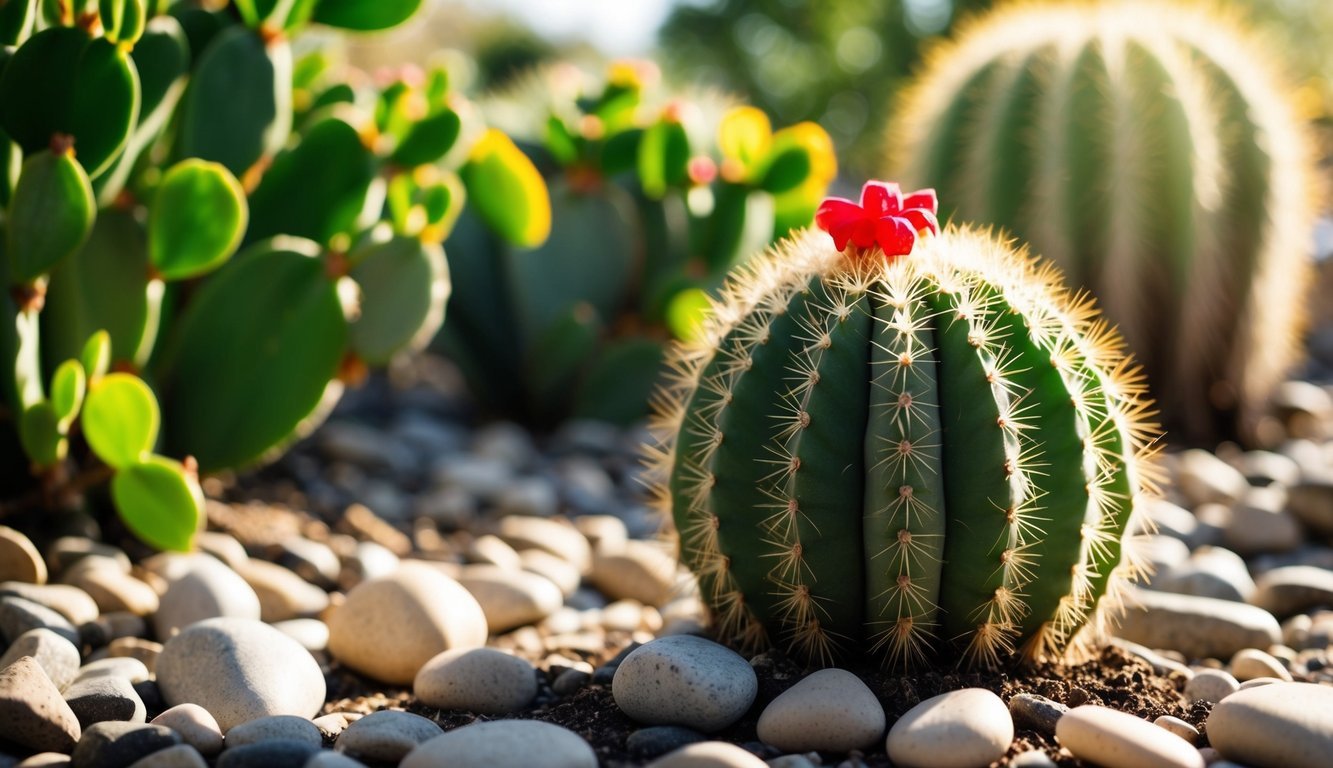
Proper watering techniques are vital for the health and longevity of your Christmas cactus.
With the right understanding of its hydration needs, your plant can thrive not just during the holiday season, but all year round.
Here, we share five essential tips on watering from seasoned horticulturist Jerad Bryant.
MIMIC NATURAL CONDITIONS
Christmas cacti thrive in bright yet filtered sunlight.
Understanding the plant’s native habitat is essential; these cacti hail from tropical Brazil, where they grow in conditions that provide good air circulation and stable moisture.
As epiphytes, Christmas cacti attach to trees and rocky surfaces, thriving above ground rather than in soil-heavy environments.
They naturally avoid root rot because they’re anchored in well-draining materials like bark and stone.
High humidity is another factor that thrives under natural conditions.
In the wild, these cacti encounter plenty of moisture, which can be hard to replicate in a dry indoor setting.
You can increase humidity around your plant by using a humidifier or placing it on a pebble tray filled with water.
Adjusting your indoor environment doesn’t have to be complicated.
Simply providing bright, filtered light (or using grow lights) and a well-draining potting mix can create an atmosphere your cactus will love.
PICK THE RIGHT SOIL
Choosing a potting mix with plenty of perlite or vermiculite is essential for ensuring optimal drainage.
This will enable you to keep your Christmas cactus happy, mirroring the moisture levels it enjoys in its natural setting.
While they thrive on coarse substrates like bark in the wild, a specially formulated potting mix that facilitates drainage will do wonders for your cactus.
Adding perlite or vermiculite will help retain some moisture for the roots while also keeping air circulating for healthy growth.
Incorporating organic matter, such as compost or worm castings, can also enhance drainage and provide essential nutrients as it breaks down.
When combined with soilless elements like coco coir, you create an ideal mix that balances both drainage and nutrition.
On average, water your Christmas cactus every three to four weeks.
Allow the surface of the soil to dry before rehydrating.
This approach closely resembles the moisture conditions these plants experience in their native habitat, where they can expect a couple of inches of rain monthly even in dry seasons.
While the common advice is to let the top soil dry out, this mainly applies to plants with poorly draining mixes.
If you choose a free-draining potting blend, you can effectively gauge the moisture needs of your cactus through regular observation.
A simple finger test can be very effective.
Poke your finger into the soil weekly to check for moisture.
If the soil feels damp for too long, it may indicate an issue with drainage.
Aim to water your cactus every three to four weeks, ensuring the top inch or two of soil is dry.
If your cactus is basking in more light, you might need to water every two weeks instead.
As summer winds down, decrease your watering frequency starting in August.
This transition helps your Christmas cactus prepare for the budding process; less moisture bolsters the plant’s stems, enabling them to support future blossoms.
Shorter days and cooler temperatures signal a need for water reduction.
For cacti growing in ideal surroundings, aim to water every two to three weeks from fall through winter.
Remember to let the soil surface dry out between waterings, but ensure the roots never become completely parched.
If you’re looking for a more technological approach, moisture meters can give you a deeper insight into the soil’s moisture levels, helping you gauge when your cactus has had enough.
Root rot is a common issue faced by indoor Christmas cacti, primarily stemming from overwatering, insufficient light, and poor soil conditions.
It is often caused by two types of fungi—Phytophthora and Pythium—that flourish in warm, damp environments.
The early signs of root rot can be subtle, manifesting as yellowing leaves or decay.
By the time you notice these symptoms, your plant’s health may already be in jeopardy.
Preventing root rot isn’t overly complicated.
Just be mindful about watering, keeping the soil evenly moist without oversaturating it.
Provide plenty of bright, indirect sunlight during the day and consider monthly fertilization during the growing season to help your cactus thrive.
If you notice early signs of root rot, reduce watering and prune any affected leaves promptly.
Keep a close watch; early action can sometimes reverse the damage.
However, if the infestation is severe, you may need to dispose of the plant and clean its pot before reusing it.
Source: Epicgardening

